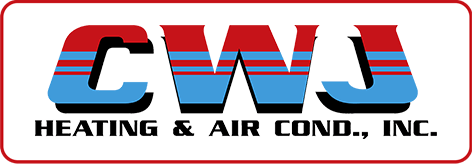After a long, cold, rainy winter, the approach of spring is welcome. However, with the continued influence of the El Niño climatological phenomenon, we can anticipate continued above average rainfall and storminess. Since October 1, 2015, the Raleigh-Durham area has received about nine inches more rain than normal. Since this time last year, RDU has received more than a foot of extra rain.
One of the main functions of your heating and air conditioning system is dehumidification. When the ground is over-saturated, it can lead to increased humidity in your home, especially in your basement. Excess moisture can lead to the development of mold and mildew.
When the weather is mild, our HVAC units are engaged less, which means we are not actively fighting humidity and the build-up of excess moisture in our homes. Here are five quick tips to help you reduce indoor humidity and prevent mold development:
1. Allow your HVAC System to Engage
We love to open our windows and enjoy the springtime warmth. Often homeowners turn off their HVAC units altogether and commit not to turn it on again till June. We want you to reduce your energy bills during spring; however, it is better for the life of your unit and for the dehumidification of your home to allow your system to engage at some point during the spring.
It is not necessary to run the heating and air conditioning system as often during the spring as it is in during Winter or Summer. Rather than turn the system off, we recommend setting the thermostat at a comfortable temperature that will allow the HVAC system to engage at some point during the week. In addition to helping reduce moisture in your home, this practice will help you diagnose potential issues and required repair needs before summer.
2. Continue Regularly Changing Air Filters
Improper airflow can damage your HVAC system and allow moisture to build up in your home. Filters should be changed at least monthly, but as often as they become dirty and laden with debris. Proper airflow is key to dehumidification.

3. Clear Outdoor HVAC Unit of Storm Debris
As we have already experienced this year, central North Carolina is prone to thunderstorms and severe weather. March-May is primetime for thunderstorms with gusty winds. After the storms has pass, examine your outdoor unit and make sure it is free of leaves, sticks, and other debris. Again, proper airflow is key to dehumidification and indoor air comfort.
4. Consider a Whole-House Dehumidification System
A whole-house dehumidification system works independently from your heating and air conditioning system to pull moisture from the air inside your home and dump it outside—where it belongs. We have written about whole-house dehumidification before. The benefits are:
- Comfort: If your house is stuffy and you find yourself lowering the thermostat often, whole-house dehumidification could be an excellent solution for your home. Dehumidification systems keep relative humidity levels steady, even when your HVAC unit is not engaged.
- Energy Efficiency: Whole-house dehumidification systems draw less amperage than HVAC units. By maintaining consistent humidity levels, a dehumidification system allows your main unit to engage less often, even during the summer. This can lead to significant energy savings.
- Mold Prevention: The best way to prevent the development of mold is to fight moisture. Dehumidification systems dry the air more efficiently than the heating and air conditioning unit in your home.
- HVAC Lifespan: Fighting humidity can cause your HVAC unit to engage and disengage too frequently, shortening its lifespan. Whole-house dehumidification systems can prevent your unit from short-cycling, potentially adding years to its life.
5) Look for Signs of Excess Moisture
Proactively look for signs of excess moisture, especially in your basement, kitchen, bathrooms, and other areas of your home that are prone to moisture. Signs of excess moisture include:
- Condensation
- Water spots or damage
- Development of mold or mildew

If your heating and air conditioning system is not keeping up with the humidity level in your home, it might be time to contact an HVAC professional about ways in which to take action against excess moisture.
Do you have additional moisture-prevention tips? Or do you have positive (or negative) experiences with whole-house dehumidification. We would love to hear from you.


